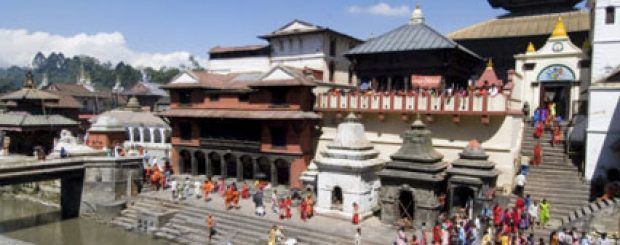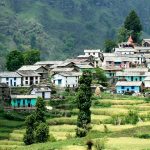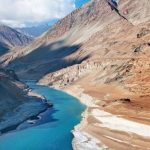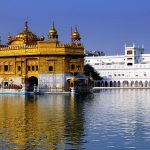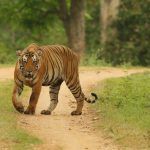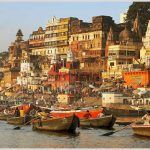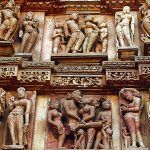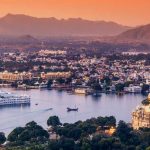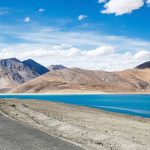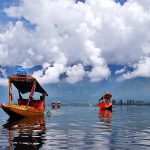North India Nepal Travel Tour Package
Day 1: Arrive Delhi
Meeting and assistance on arrival at International airport & transfer to hotel. On arrival, check in at the hotel. Overnight at the hotel.
Delhi: India’s capital & a major gateway to the country, contemporary Delhi is a bustling metropolis which successfully combines in its fold the ancient & the modern. Its strategic location was one of the prime reasons why successive dynasties chose it as their seat of power. New Delhi also reflects the legacy the British left behind. The division between New & Old Delhi is the distinction between the capitals of the British & the Moghuls respectively. So, wherever the visitor goes, he will invariably confront the city’s past.
Day 2: Delhi
Morning city tour of Old Delhi visiting Jama Masjid, the largest mosque in India. Built by Shah Jehan, the construction was started in 1844 and was not completed until 1658; Red Fort, which was also built by Shah Jehan. This massive fort was built from 1638 to 1648; Chandni Chowk and Raj Ghat – the cremation site of Mahatma Gandhi.
Afternoon, city tour of New Delhi visiting Humayuns Tomb: built in mid 16th century this is an early example of Mughal architecture; Qutub Minar, drive past India Gate, President House, Connaught Place. The city tour ends with a visit to Laxmi Narayan Temple (Birla Mandir). Overnight at the hotel.
Day 3: Delhi – Jaipur (By Surface 260 Kms, 05 Hrs Drive)
Morning drive to Jaipur – The city owes its names, foundation and its careful planning to the great warrior – astronomer Maharaja Jai Singh II. In 1727, with Mughal power on the wane, Jai Singh decided to move down from his hillside fortress at nearby Amber to a new site on the plains. He laid out the city, with its surrounding walls and six rectangular blocks, according to the principles of town planning set down in Shilpa Shastra, an ancient Hindu treatise on architecture.
On arrival in Jaipur check in at hotel. Rest of the day at leisure. Overnight at the hotel.
Day 4: Jaipur
Morning excursion to Amber Fort with Elephant ride from the foothills of the Aravallis to the fort entrance.
Amber Fort: At a distance of 11 kms from Jaipur, Amber was the ancient capital of Jaipur state. Construction of the fort began in 1592 by Raja Man Singh, the Rajput commander of Akbar’s army and is a superb example of Rajput architecture.
Afternoon city tour of Jaipur visiting the City Palace which has museum having an extensive collection of art, carpets, enamel ware and weapons ; Jantar Mantar – the observatory built my Maharaja Jai Singh in 1728 and the façade of Hawa Mahal. Overnight at the hotel.
Day 5: Jaipur – Fatehpur Sikri – Agra (By Surface 240 Kms, 06-07 Hrs Drive)
Morning drive to Agra en route visiting the abandoned Mughal city of Fatehpur Sikri: built by Emperor Akbar in 1569, was the old capital of the Moghuls, which was abandoned after 15 years due to scarcity of water. See the graceful buildings including the Jama Masjid, Tomb of Salim Chisti, Panch Mahal & other Palaces which are still preserved in its original glory.
On arrival in Agra, check in at the hotel. Overnight at the hotel.
Day 6: Agra
Morning city tour of Agra visiting Red fort, which was built by Emperor Akbar in 1565, and additions were made up until the time of his grandson, Shah Jehan. It contains the hall of public and private audiences amongst many other beautiful structures; the highlight of the day – The Taj Mahal, which was constructed by Shah Jehan in memory of his wife Mumtaz Mahal. Construction of the Taj began in 1631 and was not completed until 1653. (TAJ MAHAL IS CLOSED ON FRIDAYS)
Afternoon free. Overnight at the hotel.
Day 7: Agra = Jhansi (By Train, Shatabdi Express, 0815-1025 Hrs), Jhansi – Orchha – Khajuraho (By Surface – 178 Kms, 04-05 Hrs Drive)
Morning transfer to railway station to board train for Jhansi. On arrival in Jhansi, drive straight to Khajuraho en route visiting Orchha.
Orchha: Once the capital of Bundelas, Orchha is a village, set amongst a complex of well preserved palaces and temples. Though Orchha was founded in 1531, its golden age was during the first half of 17th century. When Jehangir visiting the city in 1606, a special palace, the Jehangir Mahal was built for him. Visit the Jehangir Mahal, Raj Mahal & Ram Raja temple which also dates back to the 17th century.
On arrival in Khajuraho, check in at hotel. Overnight at the hotel.
Day 8: Khajuraho / Varanasi (By Flight)
Morning visit Khajuraho: Built by the warrior Chandela dynasty that rose to power in Central India between 10th & 11th centuries, the 25 odd surviving temples display different facets of life, including the sensual. These erotic carvings on some panels have given rise to much speculation since Khajuraho’s re-discovery by a British officer in 1838. To preserve it for posterity, Khajuraho has been declared a World Heritage Site.
Visit the world famous Khajuraho temples built by the Chandela Kings between 950 AD & 1050 AD. The most important are the Chaunset Yogini temple dedicated to Goddess Kali, the Mahadev temple, Chitragupta or Bharatji temple with lovely image of 11 headed Vishnu, Vishwanath & Nandi temples, Lakshmana temple, and Visha temple dedicated to Shiva, which is the largest & most typical of temples.
Later transfer to airport to board flight for Varanasi: formerly known as Kashi the city that illuminates. The religious capital of Hinduism, Varanasi is the oldest living city of India & one of the worlds most ancient. The present name is derived from the fact that the city is at the confluence of the rivers Varuna & Asi.
On arrival, transfer to hotel. Overnight at the hotel.
Day 9: Varanasi
Early morning, leave for boat ride on the Ganges to see the bathing Ghats (river bank) & cremation site. Sunrise on the riverfront, as seen from a boat, can be a spiritually uplifting sight. The life on the Ghats bound in an endless string of rituals; ever-changing aspects of the river & the wide landscape across have fascinated visitors from all over the world.
Morning city tour of Varanasi – Visit the Bharat Mata temple with a big relief map of India in Marble, Durga temple, Tulsi Manas Mandir, Benaras Hindu University which has an art gallery & the mosque of Moghul Emperor Aurangzeb.
Afternoon, excursion to Ramnagar – For a 17th century fort, this one is seriously well-preserved, probably because the Maharaja of Benares still resides here. The hall of public audience (Durbar Hall) and the royal museum housing collections of palanquins, elephant saddles, arms, furniture, costumes, etc., are a must see at the Ramnagar fort. Return by boat in the evening, en route witness the religious ceremonies along the banks of river Ganges. Overnight at the hotel.
Day 10: Varanasi / Kathmandu (By Flight)
Morning excursion to Sarnath – the buried Buddhist city where Buddha preached his first sermon. After attaining enlightenment at Bodh Gaya the Buddha went to Sarnath; and it was here that he preached his first discourse in the deer park to set in motion the ‘Wheel of the Dharma’. It is one of the most holy sites as in this place the stream of the Buddha’s teaching first flowed. Sarnath was a renowned school or learning from 16th century BC to 12th century AD. Visit the ruins, the stupa, the Buddhist temple & the museum (closed on Fridays). At the museum is the Ashok Pillar with its four guardian lions, used as independent India’s national emblem.
Later transfer to the airport to board flight for Kathmandu. On arrival in Kathmandu meet and assist at the airport and transfer to hotel.
Kathmandu, the capital and largest city in Nepal, is located in the eastern half of the country in the valley of the same name at an altitude of 1300 m (4266 ft). In recent years Kathmandu has experienced a massive migration to the city, and today has a population of over 600,000. For several hundred years it was one of three rival royal cities, the others being Bhaktapur and Patan. But the unification of Nepal under Prithvi Narayan Shah and his decision to make Kathmandu his capital set the city firmly on a course of expansion. Today Kathmandu has more of a big-city atmosphere than either Bhaktapur or Patan and possesses a more developed urban infrastructure. Among its wealth of historic buildings it can boast the largest of the ancient royal palaces (and the newest) as well as innumerable Rana palaces and important shrines. Despite the growth which has made a modern city of Kathmandu, the old centre still retains something of a medieval air. The day still begins with prayers and pujas in the temples and farmers still bring their fresh vegetables to market in enormous baskets.
Day 11: Kathmandu
Morning visit the valley of Kathmandu the capital city of Nepal, Swayambhunath & Museum. Afternoon excursion to Patan & Tibetan Handicraft centre. Overnight at the hotel.
Day 12: Kathmandu
Morning visit Bhaktapur, Bodhnath & Pashupatinath. Afternoon, excursion to Dhulikhel to witness the beautiful sunset. Return to Kathmandu after sunset. Overnight at the hotel.
Day 13: Kathmandu / Delhi (By Flight)
Morning free for individual activities. Afternoon transfer to the airport to board flight for Delhi. On arrival, transfer to hotel. Overnight at the hotel.
Day 14: Depart Delhi
In time transfer to International airport to board flight back home/onward destination.
North India and Nepal Tour, Heritage of North India with Nepal Tour, North India Nepal Travel Tour Package, North India Nepal Travel Packages, North India Nepal Tour Package, north india and nepal itinerary, india and nepal tours
Social Share
North India Tours
The Hills of Kumaon
Ladakh Road Trip
Amazing Ladakh
Heritage Himachal and The Golden Temple Tour
Central India Tour Package
North India Temples with Taj Mahal Tour
Classical North India Tour
Splendours of North India
Ladakh Sojourn Tour
Best of Kashmir Tour
Contact Us
Prish India Tours
(A unit of Prish Tours Pvt. Ltd.)
139, First Floor, Vardhman Crown Mall, Plot No. 2, Sector 19, Dwarka, New Delhi – 110075, (India).
+91 11 4166 1466
+91 98104 07877, 98109 30054

